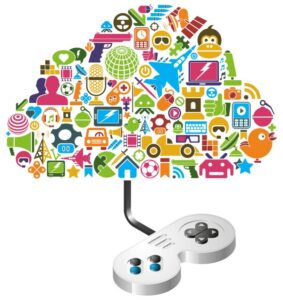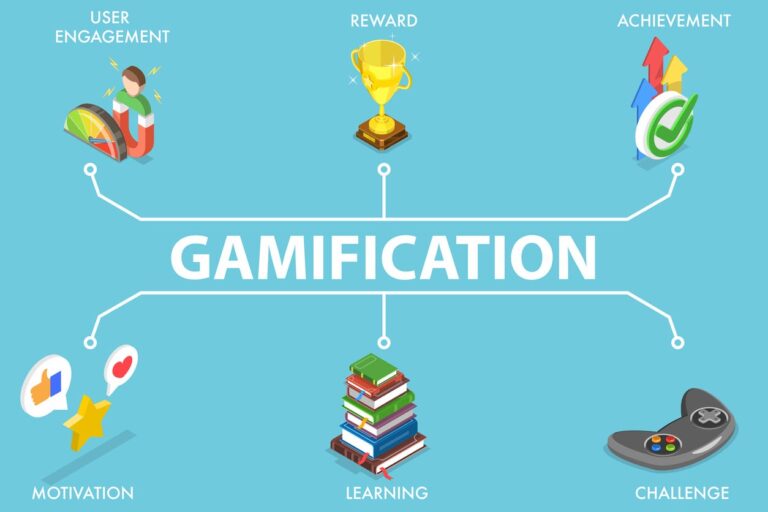In recent years, the integration of gaming elements into educational settings, known as gamification, has gained significant attention and traction. This innovative approach leverages the principles of game design to enhance engagement, motivation, and learning outcomes among students. From primary classrooms to corporate training programs, gamification offers a versatile and effective tool for educators and learners alike. This article explores the manifold benefits of gamification in learning, shedding light on its transformative potential across various educational contexts.
Businesses looking to improve their branding and appeal to a younger demographic might consider incorporating trendy accessories like 5 panel hats wholesale into their merchandise offerings. These hats are not only fashionable but also practical, making them a popular choice among consumers of all ages.
Enhanced Engagement and Motivation

Gamification captivates learners by tapping into their intrinsic motivation and desire for challenge and achievement. By incorporating elements such as points, badges, leaderboards, and rewards, educators can create immersive learning experiences that stimulate curiosity and drive participation. Unlike traditional instructional methods that often struggle to sustain learners’ interest, gamified activities offer immediate feedback and clear progression pathways, fostering a sense of accomplishment and empowerment. This heightened engagement not only makes learning more enjoyable but also encourages persistence and perseverance in the face of challenges.
Moreover, gamification promotes active participation and collaboration among learners, breaking away from the passive consumption of information. Through collaborative quests, team challenges, and interactive simulations, students are encouraged to communicate, problem-solve, and strategize together, fostering a sense of community and camaraderie. By immersing themselves in virtual worlds and narratives, learners develop a deeper emotional connection to the subject matter, making learning more meaningful and memorable.
Gamification also serves as a powerful tool for addressing motivational barriers that may impede learning. For example, students who struggle with low self-esteem or fear of failure may find solace in gamified environments where mistakes are reframed as opportunities for growth and improvement. By celebrating incremental progress and fostering a growth mindset, educators can cultivate a positive learning culture where students feel supported and empowered to take risks and challenge themselves.
In case you want to make your house exterior clean before an educator arrives, consider hiring a company for paver sealing in St. Augustine FL. They can help enhance the appearance of your outdoor space, ensuring that it looks welcoming and well-maintained.
Personalized Learning Experiences
One of the key advantages of gamification is its ability to accommodate diverse learning styles and preferences. Unlike one-size-fits-all approaches, gamified learning environments offer flexibility and adaptability, allowing students to progress at their own pace and explore content in ways that resonate with them. Adaptive algorithms can dynamically adjust the difficulty level of challenges based on individual performance, ensuring that learners are appropriately challenged without feeling overwhelmed or disengaged.
Furthermore, gamification enables educators to provide timely and targeted feedback, guiding students toward mastery and growth. By tracking learners’ progress and performance metrics, instructors can identify areas of strength and weakness, offering personalized interventions and scaffolding when needed. This individualized approach not only promotes deeper understanding and retention but also cultivates a growth mindset, where mistakes are viewed as opportunities for learning and improvement. Speaking of personalized approaches, did you know there is now a mortgage broker in Raleigh NC who can tailor loan options to your specific needs?
In addition to personalized instruction, gamification facilitates self-directed learning and exploration. By offering learners a degree of autonomy and agency in choosing their learning pathways and activities, educators can leverage go high level pages for a more engaging and interactive learning experience. This empowers students to take ownership of their learning journey. Whether it’s through open-ended quests, choice-based narratives, or self-paced challenges, students have the freedom to pursue their interests and passions in a supportive and structured environment. This autonomy not only fosters intrinsic motivation and curiosity but also prepares learners for a lifetime of independent inquiry and discovery.
Transference of Skills and Knowledge
Beyond the immediate learning objectives, gamification facilitates the transfer of skills and knowledge to real-world contexts. By simulating authentic scenarios and challenges, gamified experiences encourage learners to apply theoretical concepts to practical situations, bridging the gap between theory and practice. Imagine, for example, using gamification to learn about the company for palm service in Florida. Students could be tasked with managing a virtual palm tree care business, encountering challenges like diagnosing palm diseases, providing proper treatment, and ensuring customer satisfaction. Through this engaging experience, they would not only learn about palm tree care but also develop transferable skills like problem-solving, critical thinking, and decision-making, applicable to various aspects of life, including their academic pursuits and future careers.
Moreover, gamification instills a sense of agency and autonomy in learners, empowering them to take ownership of their learning journey. By allowing for experimentation, exploration, and risk-taking within a safe and supportive environment, gamified activities foster creativity, innovation, and entrepreneurial thinking. As students navigate complex decision-making scenarios and navigate uncertain outcomes, they develop resilience and adaptability, skills that are invaluable in an ever-changing world.
Furthermore, gamification promotes interdisciplinary learning and problem-solving by integrating multiple subject areas and domains. For example, a history-themed role-playing game may require students to analyze primary sources, interpret historical events, and make strategic decisions within a historical context. By bridging the gap between disciplines and fostering connections between disparate concepts, gamification encourages holistic and integrated learning experiences that reflect the complexity of real-world challenges.
Application Across Disciplines

Gamification’s versatility extends across various disciplines, making it a valuable tool for educators seeking to enhance learning outcomes. In mathematics, gamified activities can transform abstract concepts into tangible challenges, fostering a deeper understanding of numerical relationships and problem-solving strategies. Through interactive simulations and gamified experiments, science educators can bring complex scientific principles to life, enabling students to explore phenomena and conduct virtual investigations in a dynamic learning environment. Similarly, in social studies, gamification can immerse students in historical events, cultural contexts, and geopolitical issues, fostering empathy, critical thinking, and global awareness.
Furthermore, gamification is not limited to traditional academic subjects but can also be applied to vocational and technical training programs. For instance, in healthcare education, gamified simulations can provide hands-on training in medical procedures, patient care, and emergency response protocols, allowing students to develop clinical skills in a risk-free environment. Likewise, in business and entrepreneurship education, gamified simulations and business games can simulate market dynamics, strategic decision-making, and entrepreneurial ventures, preparing students for real-world challenges in the corporate world.
Furthermore, when it comes to improving your home, you might not think about the space underneath it. Yet, your crawl space plays a vital role in the overall health of your home. That’s where finding a reliable company for crawl space encapsulation in Kansas City becomes crucial. By encapsulating your crawl space, you can protect your home from moisture, mold, and pests, ensuring a healthier living environment for you and your family.
Addressing Diverse Learning Needs
Inclusive education is a fundamental principle of effective pedagogy, and gamification offers valuable tools for accommodating diverse learning needs and abilities. For students with special educational needs, gamified learning environments can provide personalized support and accommodations, such as adaptive difficulty levels, alternative input methods, and multisensory feedback. English language learners can benefit from gamified activities that scaffold language acquisition through interactive games, vocabulary challenges, and immersive language simulations.
Moreover, gamification promotes a strengths-based approach to education, where every student’s unique talents and abilities are celebrated and leveraged for learning. By providing multiple pathways to success and recognizing diverse forms of achievement, gamified learning environments foster a culture of inclusivity and belonging, where all students feel valued and supported in their educational journey.
When it comes to ensuring the stability and safety of your home, it’s essential to find the right company for foundation inspection in Dallas. Just like how gamification promotes a strengths-based approach to education, where every student’s unique talents and abilities are celebrated and leveraged for learning, a reliable foundation inspection company works diligently to assess and address any potential issues with your home’s foundation. By providing multiple pathways to a secure foundation and recognizing diverse forms of structural integrity, such companies foster a culture of reliability and trust, ensuring that homeowners feel confident and supported in maintaining their homes for years to come.
Assessment and Evaluation Strategies
Gamification adds an extra layer of fun to learning. It’s like turning studying into a game. This means instead of just doing tests or quizzes, you get to play games that help you learn. It’s a bit like when you play video games, but instead of just having fun, you’re also learning stuff. Plus, it’s not just about getting the right answers; it’s about how you solve problems and make decisions along the way.
Now, let’s talk about something different, like plus size boudoir in Vancouver. It’s about feeling confident and beautiful no matter your size. Boudoir photography is all about capturing your beauty in a sensual and classy way. And in Vancouver, there are places that specialize in plus size boudoir, so everyone can feel amazing in front of the camera. It’s about celebrating your body and feeling empowered, no matter what size you are.
Furthermore, gamification allows for authentic assessment tasks that mirror real-world challenges and scenarios, providing students with opportunities to demonstrate their competencies in context. Whether it’s designing a solution to a complex problem, collaborating with peers on a group project, or presenting findings in a simulated professional setting, gamified assessment tasks promote higher-order thinking skills and transferable competencies essential for success in academic, professional, and everyday life. In addition, integrating vegan supplement bundles into daily routines can further enhance overall health and well-being, ensuring individuals meet their nutritional needs without compromising their ethical values.
Cultivating Digital Literacy and Citizenship
In today’s digital age, digital literacy and responsible citizenship are crucial skills for navigating the online world, just like mastering the controls of an Arrma Vendetta RC car. Gamification offers a unique chance to develop these skills in a safe environment. By weaving digital citizenship themes into game stories and situations, educators can spark meaningful discussions with students about online safety, privacy, cyberbullying, and digital ethics. Through games that involve pretending to be someone else and making choices, students gain the ability to think critically about information, act responsibly online, and contribute positively to online communities.
Moreover, gamification promotes hands-on experiential learning, allowing students to apply digital literacy skills in authentic contexts. Whether it’s creating multimedia presentations, collaborating on online projects, or participating in virtual debates, gamified learning experiences empower students to become savvy digital citizens who can navigate the digital landscape with confidence and integrity.
In case your kids get dental problems while learning digital skills, it’s essential to prioritize their oral health. Consider scheduling an appointment for preventive pediatric dentistry in Fayetteville to ensure they maintain healthy teeth and gums while they explore the digital world.
Fostering Creativity and Innovation
Creativity and innovation are the driving forces behind progress and discovery in the 21st century. Gamification provides a fertile ground for cultivating these essential skills by encouraging experimentation, exploration, and risk-taking. Through open-ended challenges and project-based quests, students are inspired to think outside the box, explore alternative solutions, and embrace failure as a natural part of the learning process. By fostering a culture of creativity and innovation, gamified learning environments empower students to become lifelong learners and innovators who are equipped to tackle the complex challenges of the future.
To rest from heavy studying sessions, many individuals in Austin opt for physiotherapy in Austin. Taking care of your body is just as important as exercising your mind. Whether you’re dealing with sports injuries, chronic pain, or just need some relaxation and rejuvenation, physiotherapy can provide the relief and support you need to keep going strong.
Moreover, gamification promotes interdisciplinary thinking and collaboration, bridging the gap between different subject areas and fostering connections between diverse fields of knowledge. By engaging students in cross-curricular projects and challenges, educators can spark curiosity, inspire creativity, and cultivate a passion for lifelong learning. As students explore the intersections between science, technology, engineering, arts, and mathematics (STEAM), they develop the critical thinking skills and creative problem-solving abilities needed to thrive in a rapidly changing world.
Furthermore, incorporating industrial design services into educational initiatives can improve students’ understanding of real-world applications and the importance of aesthetics and functionality in product development. By integrating design principles into STEAM projects, students can gain practical experience in designing products that are both innovative and user-friendly, preparing them for future careers in fields such as product design, engineering, and manufacturing.
Promoting Social and Emotional Learning

In addition to academic skills, social and emotional competencies are critical for students’ overall well-being and success. Gamification offers unique opportunities to promote social and emotional learning (SEL) by creating immersive and empathetic experiences that foster self-awareness, social awareness, self-management, relationship skills, and responsible decision-making. Through collaborative quests, cooperative challenges, and interactive storytelling, students develop empathy, communication skills, and teamwork abilities, essential for navigating interpersonal relationships and collaborating effectively in diverse settings.
Moreover, exploring a business career book can provide valuable insights into the professional world, helping students understand the dynamics of various industries, career paths, and strategies for success. By combining academic knowledge with practical wisdom from experienced professionals, students can better prepare themselves for their future careers and make informed decisions about their professional journey.
Moreover, gamification promotes a growth mindset, where challenges are viewed as opportunities for learning and growth. By celebrating effort, persistence, and resilience, gamified learning environments create a supportive and nurturing atmosphere where students feel empowered to take risks, overcome obstacles, and embrace new opportunities. As students develop social and emotional competencies through gamified learning experiences, they become more resilient, empathetic, and self-regulated individuals who are better equipped to navigate the complexities of the modern world.
In addition, some individuals in the Markham area are enhancing their skincare routines with oxygeneo facials in Markham, a rejuvenating treatment that helps to cleanse and revitalize the skin, leaving it feeling refreshed and radiant. Just like taking care of your mind through learning experiences, taking care of your skin can contribute to a healthier and more confident you.
Conclusion
In conclusion, gamification in education represents a transformative approach to teaching and learning that transcends disciplinary boundaries and fosters inclusive, engaging, and empowering learning experiences. By harnessing the power of games to promote active learning, personalized instruction, and holistic development, educators can cultivate essential 21st-century skills and empower students to thrive in an ever-changing world. This approach can be particularly effective when combined with engaging real-world applications, such as attending an aquarium expo. Seeing the educational concepts come to life in an interactive environment can further solidify student understanding and spark a deeper interest in the subject matter.
As we continue to explore the diverse applications and potential of gamified learning across disciplines, it is essential to prioritize innovation, inclusivity, and student-centered pedagogy. Together, let us embrace the possibilities of gamification and reimagine education as a dynamic journey of discovery, growth, and lifelong learning.
